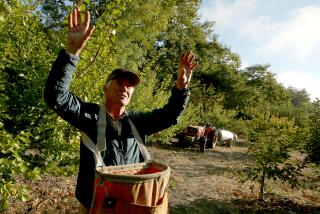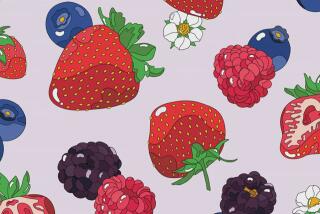Prairie Apples
- Share via
When we have too much fruit on hand these days, we can freeze it or at least can it. But in earlier times, the main option was drying.
You pay a price when you dry fruit, because most of the fresh aroma evaporates and enzymes cause reactions that make for a generic sort of flavor; a raisin and a dried fig taste much more alike than a grape and a fresh fig do. But dried fruit is sweeter than fresh, so when people started making fruit pies, back in Shakespeare’s time, they mostly used dried fruit because fresh fruit wasn’t sweet enough. Sugar was still too expensive for everyday use.
We used to eat a lot of dried apple pie in this country, particularly in thrifty New England and out on the Western prairies, where there was usually no other kind of apple. The cowboys didn’t like it much. There was an old rhyme that chuck wagon cooks must have gotten pretty tired of: Spit in my ear and tell me lies, but serve me no dried apple pies.
For that matter, raisin pie used to be moderately popular, though lunch counter waitresses were in the habit of calling it “fly pie.” Grapes are, of course, the fruit most often dried, one variety being a small seedless raisin called the currant, which originally came from the Corinth region of Greece.
Grapes, figs, dates, apricots--the fruits that get dried tend to be warm-climate fruits. In Xinjiang Province, China, a ferocious desert zone north of the Himalayas where homes are often made underground to avoid summer temperatures over 115 degrees, the Uighur people even dry melons. They slice them and put them out in the morning, and in a day or so they’re like date-flavored leather. They export these dried melons all over Central Asia, where they’re pretty much the dried apple of the Asian prairies.
More to Read
Sign up for The Wild
We’ll help you find the best places to hike, bike and run, as well as the perfect silent spots for meditation and yoga.
You may occasionally receive promotional content from the Los Angeles Times.






